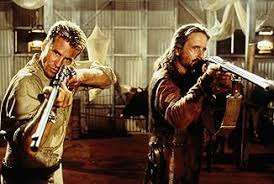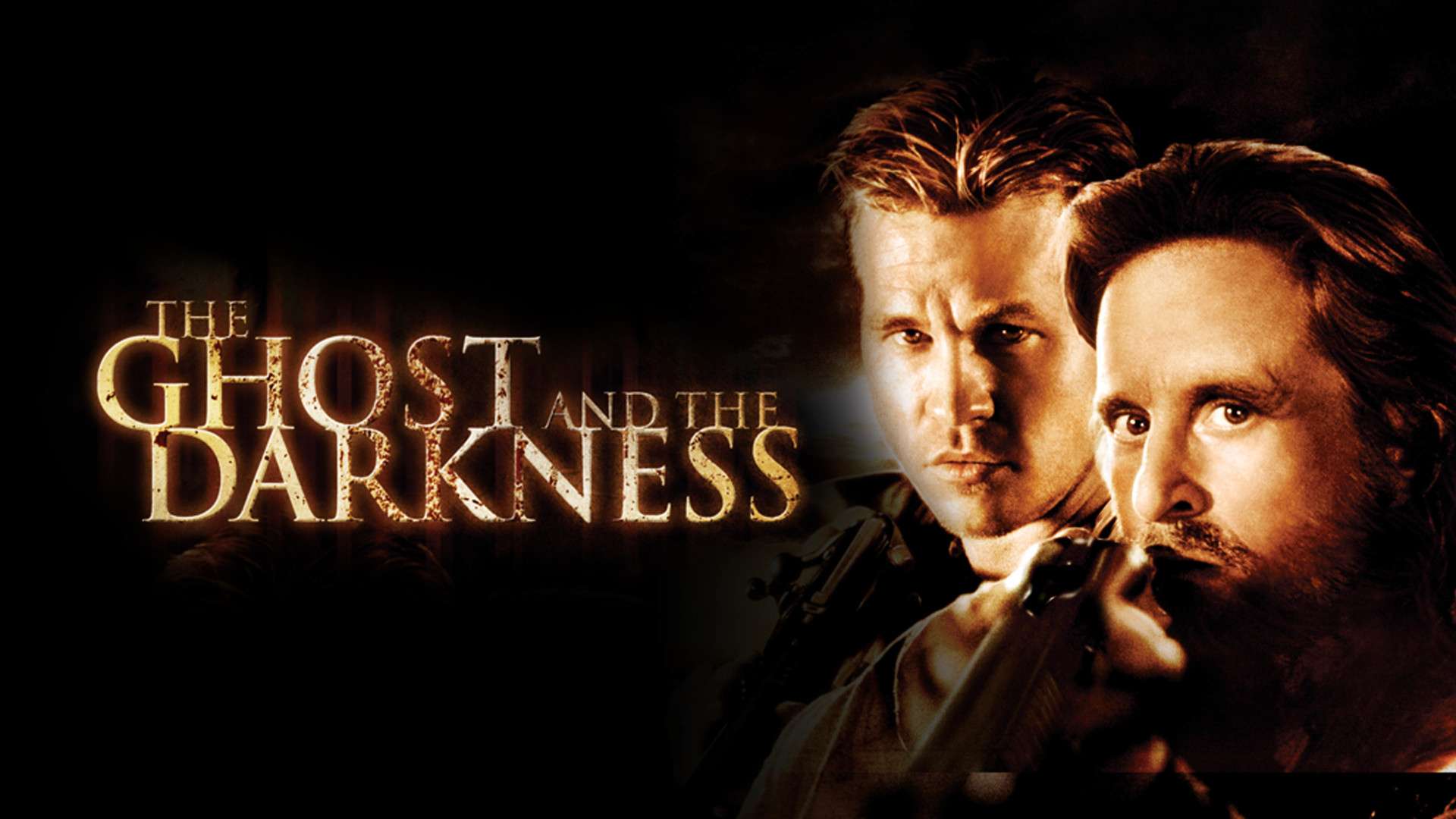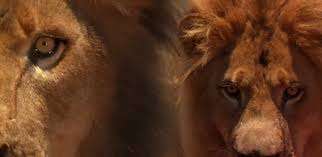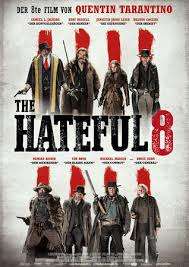Directed by: Stephen Hopkins
Written by: William Goldman
Starring: Val Kilmer, Michael Douglas, Tom Wilkinson, John Kani
Genre: Historical Adventure / Thriller
Runtime: 110 minutes
🦁 Introduction
The Ghost and the Darkness is one of those rare 1990s films that blends mythic horror, historical drama, and old-school adventure with surprising effectiveness. Released in 1996 and based on real events, it dramatizes the terrifying lion attacks during the construction of the railway bridge over the Tsavo River in Kenya in 1898. The film is an atmospheric, slow-burn thriller that draws from the traditions of Jaws and Apocalypse Now, filtered through a colonial African lens.
Anchored by two charismatic performances from Val Kilmer and Michael Douglas, and written by the legendary William Goldman (The Princess Bride, Butch Cassidy and the Sundance Kid), the film strikes a unique tone—somewhere between suspense thriller and period epic, with nature itself as the villain.
🏗️ The Plot: Fact Meets Fear
The film tells the story of Lieutenant Colonel John Henry Patterson (Val Kilmer), an Irish engineer sent by the British Empire to Tsavo, Kenya, to oversee the construction of a railway bridge. What seems like a routine assignment quickly turns into a nightmare as workers begin disappearing—killed by what turn out to be two unusually aggressive and cunning man-eating lions.
These lions aren’t just hunting for food—they’re killing for sport. Nicknamed The Ghost and The Darkness, they evade traps, attack in broad daylight, and spread terror among the multicultural workforce. With progress halted and morale shattered, the British bring in famed American hunter Charles Remington (Michael Douglas), a maverick who joins Patterson in the escalating war against the predators.
The film steadily builds toward a showdown between man and beast, but also subtly critiques imperialism, ego, and the hubris of mankind in the face of nature’s raw power.

🧔 Performances: Leading Men and Menacing Lions
Val Kilmer plays Patterson with a quiet intensity. He’s competent, intelligent, but plagued by self-doubt—a man trying to live up to expectations both personal and imperial. His accent wavers at times, but he carries the emotional weight of the film admirably. There’s a believable arc from a confident engineer to a man obsessed, scarred, and humbled by what he’s witnessed.
Michael Douglas, on the other hand, is the film’s wild card. His character, Remington, is not based on a real historical figure but was created to spice up the narrative. With his rugged appearance, grizzled charisma, and laid-back American bravado, Douglas steals scenes and adds dramatic color. Some critics found his character an odd addition, but he works as a dramatic foil to Kilmer’s more stoic Patterson.

The supporting cast includes Tom Wilkinson as Patterson’s dismissive superior and the always-reliable John Kani as Samuel, Patterson’s loyal translator and moral compass. Their presence helps ground the film in a sense of cultural conflict and colonial tension.
But the real stars? The lions.
The two Tsavo lions are terrifying—not because they are supernatural, but because of how methodical and intelligent they seem. Their screen presence is enhanced by clever cinematography, sound design, and just enough practical and digital effects to make them feel like true monsters.
🎥 Direction & Atmosphere: Africa as a Character
Stephen Hopkins, known for films like Predator 2 and Judgment Night, brings a kinetic yet restrained approach here. He captures the beauty and danger of the African landscape in wide, sun-scorched shots and shadowy nighttime sequences that drip with tension. The lions are rarely shown for long, making them all the more fearsome—echoing Jaws-like suspense.

The atmosphere is thick with fear and sweat. The camps feel vulnerable, the jungle impenetrable, and the sense of dread builds with each passing day. Hopkins uses natural light, animal roars, and eerie silences to build suspense that is not reliant on jump scares, but on a growing realization of helplessness.
🎵 Score: Jerry Goldsmith’s Roar
No review of The Ghost and the Darkness is complete without mentioning Jerry Goldsmith’s haunting score. Combining African tribal instruments with sweeping orchestration, the music is equal parts heroic, ominous, and tragic. Goldsmith elevates the film’s emotional stakes, particularly in moments of silence, death, or revelation. The score serves as both a lament for the lives lost and a hymn to the wild unknown.
📜 Historical Basis
The film is inspired by real events. In 1898, two male lions terrorized the construction site of a railway bridge over the Tsavo River. They reportedly killed more than 130 people, though modern historians estimate the actual number was closer to 35. Lt. Col. John Henry Patterson did kill both lions, and their taxidermied remains are now on display at the Field Museum in Chicago.
The true story is fascinating, and while The Ghost and the Darkness takes liberties—especially with the addition of Douglas’s character—it stays close to the psychological core: man versus nature, belief versus fear.
🧠 Themes: More Than a Monster Story
On its surface, The Ghost and the Darkness is a survival thriller. But it also explores deeper themes:
-
Colonial arrogance: The film subtly critiques British imperialism, portraying the construction of the railroad as a symbol of mankind’s desire to control nature — a desire punished by the lions’ unstoppable ferocity.
-
Fear of the unknown: The lions represent more than predators. To the workers, they are supernatural entities. To Patterson, they become a symbol of personal failure. The film flirts with the idea of spiritual vengeance without fully crossing into the paranormal.
-
Masculinity and heroism: The clash between Kilmer’s quiet competence and Douglas’s rugged individualism reflects two versions of masculinity. Both are tested—and neither escapes unscathed.
⚖️ Criticism & Legacy
The Ghost and the Darkness wasn’t a major box office success, and critics were divided upon release. Some found the pacing uneven, and others questioned the narrative need for Douglas’s character. Today, however, it enjoys a cult following.
Critics have since praised its unique atmosphere, its serious tone, and its deviation from typical creature-feature tropes. It’s an adventure film for grown-ups—deliberate, moody, and unnerving.
🧾 Final Verdict
The Ghost and the Darkness is a gripping, visually stunning, and surprisingly thoughtful survival thriller. It’s part creature-feature, part historical drama, and part psychological study of fear and obsession. Anchored by strong performances and a haunting score, it remains one of the most underrated films of the 1990s.
If you’re looking for a story where man confronts the wild—and the wild bites back—this is a journey worth taking.
Rating: ★★★★☆ (4/5)
Best For: Fans of historical thrillers, creature features, or introspective adventure dramas.
Watch It If You Liked: Jaws, The Revenant, Apocalypse Now, The Edge





